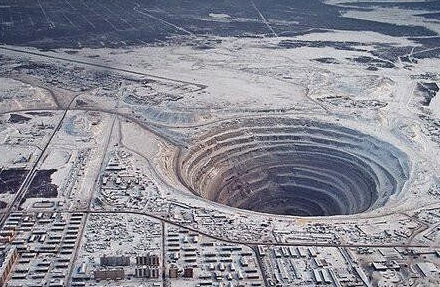Four years later, Soviet scientists decided to try their luck on dry land. They chose a spot on Russia's Kola Peninsula, near the Finnish border, and set to work with the hope of drilling to a depth of fifteen kilometers. The work proved harder than expected, but the Soviets were commendably persistent. When at last they gave up, nineteen years later, they had drilled to a depth of 12,262 meters, or about 7.6 miles. Bearing in mind that the crust of the Earth represents only about 0.3 percent of the planet's volume and that the Kola hole had not cut even one-third of the way through the crust, we can hardly claim to have conquered the interior.

Interestingly, even though the hole was modest, nearly everything about it was surprising. Seismic wave studies had led the scientists to predict, and pretty confidently, that they would encounter sedimentary rock to a depth of 4,700 meters, followed by granite for the next 2,300 meters and basalt from there on down. In the event, the sedimentary layer was 50 percent deeper than expected and the basaltic layer was never found at all. Moreover, the world down there was far warmer than anyone had expected, with a temperature at 10,000 meters of 180 degrees centigrade, nearly twice the forecasted level. Most surprising of all was that the rock at that depth was saturated with water—something that had not been thought possible.












